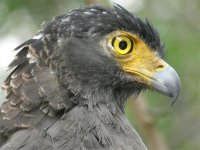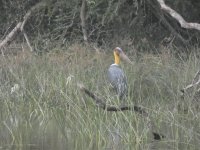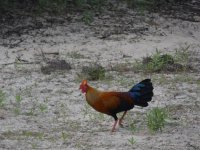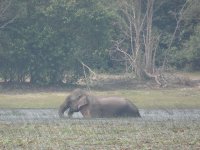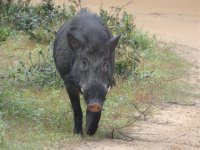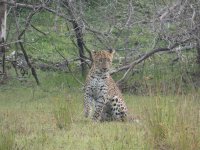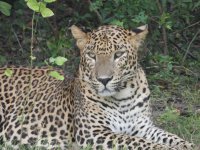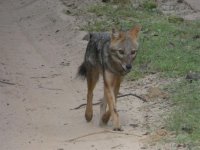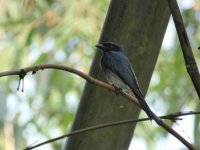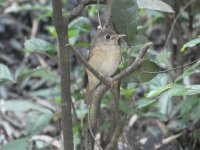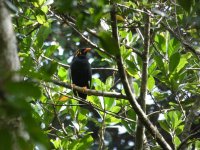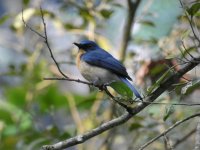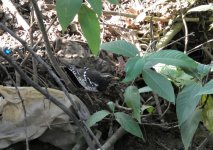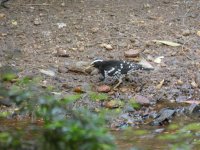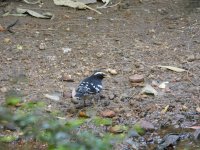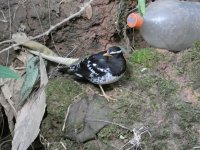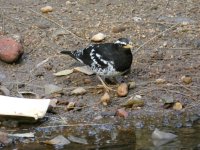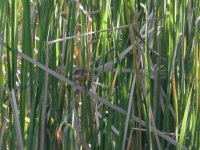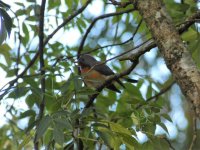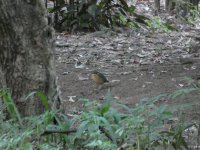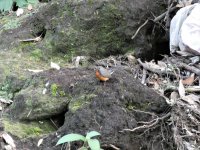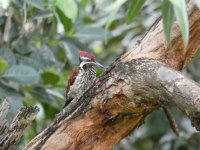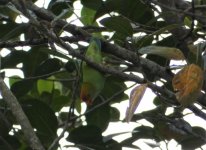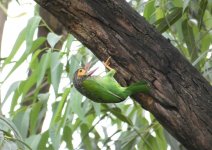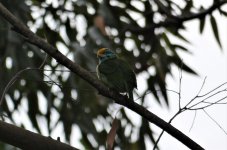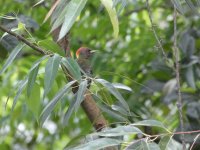dwatsonbirder
Well-known member
It's not a proper winter for my partner and I unless we escape the festive season for the tropics...
Overview
Sri Lanka was to be our first time in the Indian subcontinent, and as such offered a good opportunity to encounter some new species as well some species more familiar from further east in Asia. Sri Lanka is a small country but has a high diversity of birds, with over 400 species recorded a 32 endemic species present. Our itinerary was planned to both maximise time in the different habitats (dry lowlands, mid-elevation, highland, wet lowland) and allow a week of much needed R&R along the southern coast of the country at the end. As a result this report will be geared more towards the first 15 days of our trip.
Route
Wilpatu NP, Kandy (Botanical gardens and Udawattekele Sanctuary) Ella, Nuwara Eliya (Victoria Park and Racecourse), Ella, Haputale, Sinharaja NP, Udawalawe NP, Dickwella, Unawatuna, Mirissa, Hikkaduwa and Negombo.
Principal targets
Unlike many of the other trips where all the endemics were targeted, I focused primarily on seeing 3 migrant/wintering species and one endemic; Indian pitta, Pied thrush, Kashmir flycatcher and Spot winged thrush. Although we planned to spend 2 nights in Sinharaja, I didn’t specifically target Serendib Scops owl as I thought it would be unattainable without a specialist guide - it would appear that the species is more achievable nowadays than it has been in the past. The trip was also organised to maximise our mammal targets namely Leopard, Sloth bear, Indian elephant and Blue whale. Unfortunately we only managed to see half of these species.
Logistics and other general information
Getting around in Sri Lanka is generally cheap and very easy. We predominantly used tuk tuk’s, buses and trains, though a few areas were accessed via private taxi to maximise time. As an indication of cost, a tuk tuk costs approximately 100rps per kilometer for a shorter journey, but we undertook a few journeys of between 30 - 50km paying between 2000 - 2500 for these journeys. Trains are a good way to get around in the central areas, with 3rd class fares from 40rps, to first class air con reserved seating for 1500rps. Buses are very cheap and convenient, and if looking to undertake the same trip on a stricter budget, I would strongly advise as the main form of transportation. We took 4 private taxis (Airport to Wilpatu NP, Haputale to Sinharaja, Sinharaja to Udawalawe NP and Hikkaduwa to Airport) which cost between 8500 - 12,000rps. I would recommend the use of taxi to get in and out from Sinharaja (difficult and long winded via public transport) but also to book in advance (we used pickme.lk) as we paid 9000rps to get to Sinharaja but 12,000rps to get out and cover a shorter distance.
Most National Parks can only be accessed via authorised vehicles, but these can generally be organised via your accommodation. As a rough indication, a typical cost for 2 people taking a jeep for a full day with entry fees was approximately 12,000rps. I only used a guide in Sinharaja (where it is mandatory) but much of the rest of the country can be birded easily using data from ebird and other trip reports. I would strongly recommend Wasante in Sinharaja as his knowledge of calls and location gen for some difficult species was spot-on (he did not have a contact number so best to ask at the HQ).
We used Saudia for both flights, but I am afraid I can’t endorse them… more on that later.
Field guides used were the Helm “Birds of the Indian Subcontinent” and the recently published photoguide by Gehan de Silva Wijeyeratne.
Overview
Sri Lanka was to be our first time in the Indian subcontinent, and as such offered a good opportunity to encounter some new species as well some species more familiar from further east in Asia. Sri Lanka is a small country but has a high diversity of birds, with over 400 species recorded a 32 endemic species present. Our itinerary was planned to both maximise time in the different habitats (dry lowlands, mid-elevation, highland, wet lowland) and allow a week of much needed R&R along the southern coast of the country at the end. As a result this report will be geared more towards the first 15 days of our trip.
Route
Wilpatu NP, Kandy (Botanical gardens and Udawattekele Sanctuary) Ella, Nuwara Eliya (Victoria Park and Racecourse), Ella, Haputale, Sinharaja NP, Udawalawe NP, Dickwella, Unawatuna, Mirissa, Hikkaduwa and Negombo.
Principal targets
Unlike many of the other trips where all the endemics were targeted, I focused primarily on seeing 3 migrant/wintering species and one endemic; Indian pitta, Pied thrush, Kashmir flycatcher and Spot winged thrush. Although we planned to spend 2 nights in Sinharaja, I didn’t specifically target Serendib Scops owl as I thought it would be unattainable without a specialist guide - it would appear that the species is more achievable nowadays than it has been in the past. The trip was also organised to maximise our mammal targets namely Leopard, Sloth bear, Indian elephant and Blue whale. Unfortunately we only managed to see half of these species.
Logistics and other general information
Getting around in Sri Lanka is generally cheap and very easy. We predominantly used tuk tuk’s, buses and trains, though a few areas were accessed via private taxi to maximise time. As an indication of cost, a tuk tuk costs approximately 100rps per kilometer for a shorter journey, but we undertook a few journeys of between 30 - 50km paying between 2000 - 2500 for these journeys. Trains are a good way to get around in the central areas, with 3rd class fares from 40rps, to first class air con reserved seating for 1500rps. Buses are very cheap and convenient, and if looking to undertake the same trip on a stricter budget, I would strongly advise as the main form of transportation. We took 4 private taxis (Airport to Wilpatu NP, Haputale to Sinharaja, Sinharaja to Udawalawe NP and Hikkaduwa to Airport) which cost between 8500 - 12,000rps. I would recommend the use of taxi to get in and out from Sinharaja (difficult and long winded via public transport) but also to book in advance (we used pickme.lk) as we paid 9000rps to get to Sinharaja but 12,000rps to get out and cover a shorter distance.
Most National Parks can only be accessed via authorised vehicles, but these can generally be organised via your accommodation. As a rough indication, a typical cost for 2 people taking a jeep for a full day with entry fees was approximately 12,000rps. I only used a guide in Sinharaja (where it is mandatory) but much of the rest of the country can be birded easily using data from ebird and other trip reports. I would strongly recommend Wasante in Sinharaja as his knowledge of calls and location gen for some difficult species was spot-on (he did not have a contact number so best to ask at the HQ).
We used Saudia for both flights, but I am afraid I can’t endorse them… more on that later.
Field guides used were the Helm “Birds of the Indian Subcontinent” and the recently published photoguide by Gehan de Silva Wijeyeratne.






